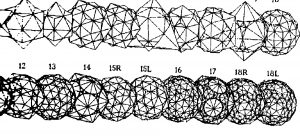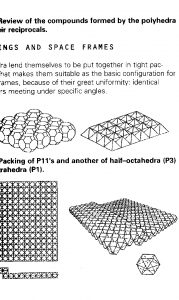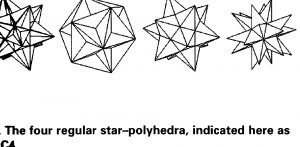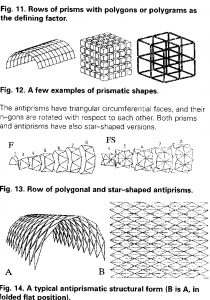“The Outlines of the Polyhedric World” presented by Ende and Huybers
Symposium:
Presentation Title:
- The Outlines of the Polyhedric World
Presenter(s):
Abstract:
Abstract
Long Paper
Although we do not always realize this, the shape of most of the visible world around us is to a great extent governed by the geometry of polyhedra. A polyhedron is a shape that is covered by many (= poly) flat faces (= hedra). Even curved surfaces can often be considered as a three-dimensional tiling of infinitesimally small plane faces. If we use in this context the term ‘polyhedron’ we are generally referring to the so-called Platonic and Archimedean solids, which are convex bodies that are covered by a closed pattern of regular polygons. They have a form that is so perfect, that they exert a great attraction to both artists and technicians. Also in architecture they have been applied in many ways and they form the geometric basis of most buildings and structures. This paper deals specifically with the architectural use of these forms and with their influence on our man-made environment. They can either define the overall shape of the building structure or its internal configuration. In the first case, the building has a more or less dome-shaped, centrally symmetric appearance, consisting of a faceted or gridded envelope. Such polyhedral shapes are often combined so that they form close-packing conglomerates as for instance in apartment buildings, in folding structures or in space frames. Their original shapes are often not always directly recognizable and it is therefore interesting to investigate common characteristics and to try to find out by what geometric laws these shapes are defined and how they can be influenced in order to make them fit more properly to the demands. A computer program is being developed, with the help of which the geometry of these structures can be analyzed. Three-dimensional information becomes available, either in alphanumeric or in graphical form, which leads to a better understanding and which is necessary for their visualization and realization.










